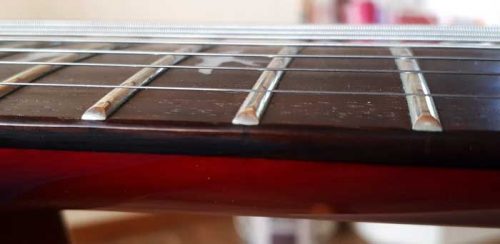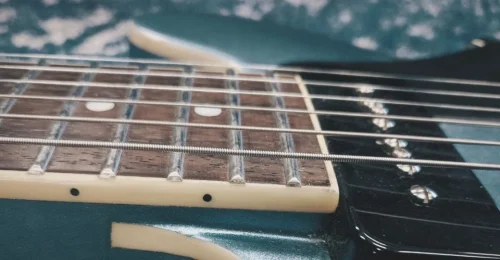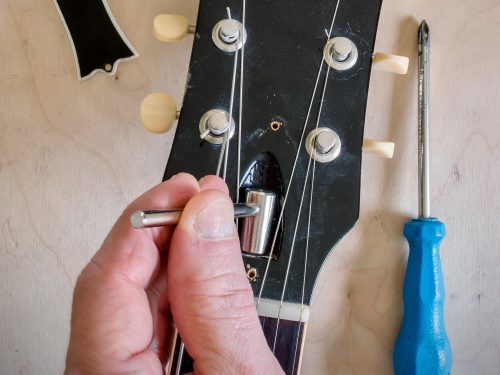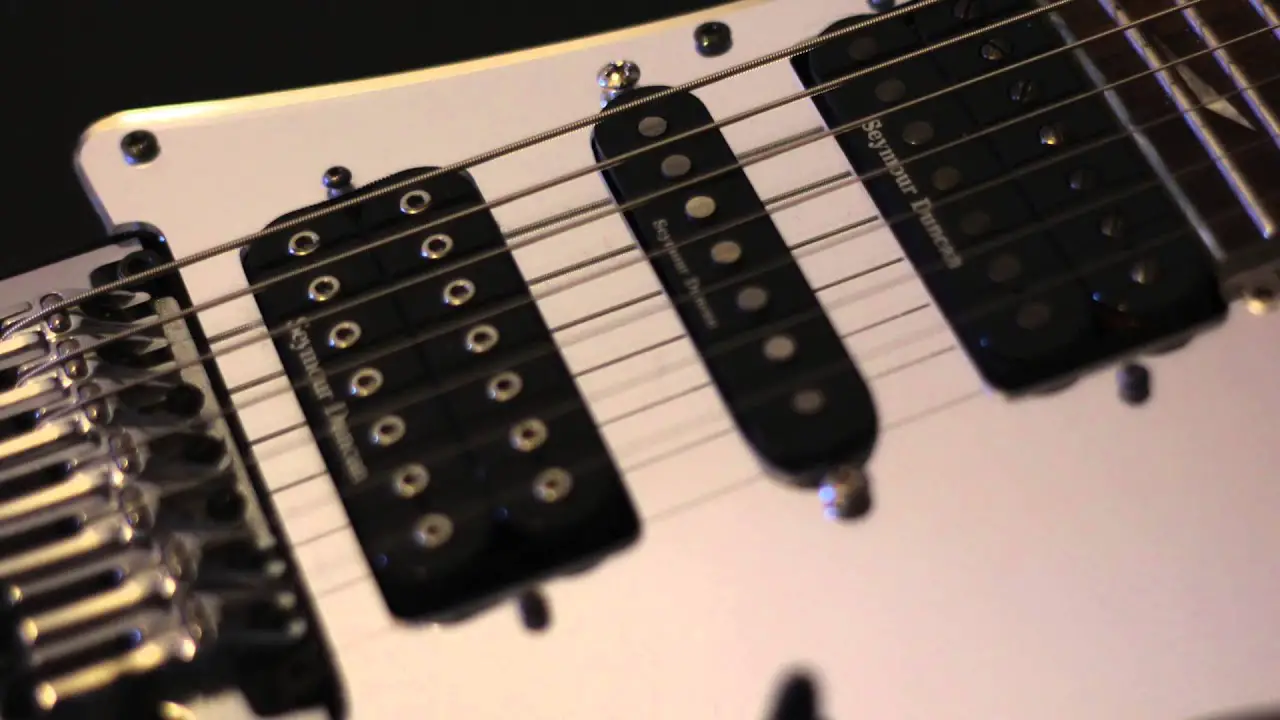Sometimes we replace the old strings to get rid of unwanted buzzing, but even after attaching new strings to the guitar, buzzing still occurs. Well, there’s nothing to worry about. The buzzing of new strings is pretty normal, and there are numerous solutions to tackle this dilemma.
If the newly attached strings are a bit thinner than the previous one, they are more likely to buzz and it is normal. Due to thinner strings, the guitar will have a lower tension and would require some adjusting to stop the buzz.
However, new strings don’t normally buzz more than the old strings. It’s one of the most common problems that you might come across after changing your strings. There’s nothing to worry about.
While browsing forums and reddit, I found that many guitarists come across this problem of string buzzing after getting new strings, and there are numerous quick hacks to solve this dilemma, such as adjusting neck relief, string gauge, and many other easy solutions. Let’s discuss them all in this article!
Note: If you specifically have buzzing issue only on your high E String, then it may be a different issue. More on that here. How To Fix Buzzing on High E String? (Low Frets & High Frets)
Also Read:
- The Secret to Silencing Fret Buzz: A Guide for Guitar and Bass
- Complete Guide To Stop EVERY Type Of Buzzing Noises For Amp!
4 Common Causes For New Strings To Buzz (With Fix)
Here are some of the areas you need to check to identify the cause and fix the problem;
1. String is too thin for nut

Lighter strings will fall more into nut slot causing buzz.
Lighter strings are a bit thinner than usual, due to this the strings are prone to be placed slightly lower in the nut slots, if the nuts are made for the larger strings, this might create an issue for sure.
However, the visibility of the rattle in the nut slot is low, but the effects are evident in the shape of buzzing.
Here, you need to identify if the buzz is at the first fret, and once it’s confirmed, you might need to raise the nut a little bit or change it completely to get rid of the problem.
If you are finding it difficult to identify the correct nut height, you can hold each of the strings at the third fret and inspect if there’s a tiny gap between the first fret and the string. In case, any string is touching the fret, playing open strings will cause a buzzing.
Also Read: Heavy Vs Light Guitar Strings: Sound, Playability & Tuning
2. Action is too low

There is a high chance that your action is set too low at the bridge and it is causing the strings to buzz. If you have an electric guitar, there are screws that you can use to change the height of the strings. However, for an acoustic guitar, it is a much harder task to do. If the saddle is too low, you might need to change it to avoid the buzzing of the strings.
For an acoustic guitar, you need to set up the action at 2.5mm on the low E string at the 12th fret. However, for the high E string, you need to keep it 2mm. If you have an electric guitar, you can set up the action 2.3mm on the low E string at the 12th fret and for the high E string, you will have to keep it at 1.6mm.
Another way to identify if your new strings are buzzing at a low action, strum or pick the strings hard, and they will buzz more.
Also Read: High Vs Low Action String: Which Is Easier To Play & Strum
3. High fret crowns

When you adjust the new strings, sometimes the strings settle on the neck slightly differently, causing the buzz. If the nut and saddle area is doing pretty fine, there are chances that you have a high fret.
If the buzzing persists at only one or two places on the neck, it indicates that the crown of the very next lowest fret might be causing the trouble.
A fret rocker can help you identify if the frets are uneven. To solve this problem, you can file a fret a little bit to stop the buzzing. Alternatively, you could bring your guitar for a long overdue fret crowning.
Also Read: Guitar Refret: When, How Often & How To Know (Is It Worth It)
4. Less string tension

When the strings are lighter they have less tension that ultimately causes the truss rod to pull the neck backward, more than necessary. The backward pull on the neck makes it straight and the buzzing persists on the center of the neck.
For this, you will need to put the capo on the first fret to check the neck relief. Moreover, you are required to hold the low E string down at a high fret. Now, closely watch the 8th fret and see if it has a large gap between the string and the fret.
While you are checking this, make sure that the strings are tuned up to pitch. For tiny gaps, you can loosen the truss rod a bit using any tool.
Do New Guitar Strings Need To Break In?
It is important to break in the new guitar strings as they are more likely to go out of tune quickly and they sound more metallic (when not broken in).
The string gauge size, the manufacturer of the strings, and your playing habits play an important role in the time taken to break in new strings. The new strings on acoustic or electric guitars sound brighter than usual. The tone is metallic and it makes it obligatory to break in the new guitar strings.
It usually takes a few hours to break in the new strings. However, the time also depends on the guitar you are using, whether it is an electric or acoustic guitar. Electric guitar strings take less time than acoustic guitar strings.
Some players might also prefer this tone. However, those who like warm sounds will certainly break in the strings to amend the tone. Breaking in the new strings is not a very lengthy and complex process.
Will Buzzing Caused By New Strings Go Away By Itself?
Sometimes the buzzing from new strings can go away by itself. To settle down the strings, it takes a few hours of continuous playing to adjust the tone and stop them from buzzing if any other issue does not persist.
Strings need a certain time to stabilize, and it surely depends on the material, manufacturer, and your playing style too.
It might take 3-7 days for the buzzing to go away by itself. However, if the buzzing is not going anywhere even after playing the guitar for a week, you might need to look into other issues that might be the reason for the buzz and solve them quickly.
How To Prevent Buzzing After Restringing Guitar
If you are planning to change your old strings because they are starting to buzz or are not your type anymore. Here are a few tips you need to keep in mind if you restring them in the future;
1. Get the right string gauge
If the new strings have a lighter gauge, the buzzing will likely happen. To prevent buzz, you should ideally replace it with the same gauge – oven better, the same brand.. The different brands have their own strings, some are lighter to play and vibrate more, causing the buzz. Check the string gauge and type before buying them.
2. Avoid low humidity
The ideal humidity to play the guitar without any buzz is from 45% to 55%. The environment in which you choose to play the guitar has an important role. If you live in a very dry area, there are high chances that your strings might buzz even after restringing the guitar.
The main indicators of a dry guitar are sharp fret ends, and you’ll notice that your fingers would start to hurt more while playing. To solve this dilemma, you can buy a room humidifier that can help you manage the humidity levels in the room you are playing.
3. Adjust the tuning
When you attach new strings to the guitar, you need to adjust it to the standard tuning and see if it’s buzzing or not.
If you are changing the strings of a guitar, it is understandable that it might go out of tune.
Once it’s okay on the standard tuning, you can change it afterward, according to your preference. Make sure that the action is not too low, as it is one of the main reasons behind buzzing. Increase the string action after restringing the guitar to avoid the buzzing.
4. Apply the right amount of pressure
If you are just done restringing the guitar, you need to keep in mind that the amount of pressure needed to play the guitar might be a bit different now. If you are not pressing down on the strings hard enough, the strings will buzz a lot. Make good contact with the strings.
If you have troubles with applying pressure to string, then read this article: 7 Simple Ways To Make Guitar Strings Easier To Press






